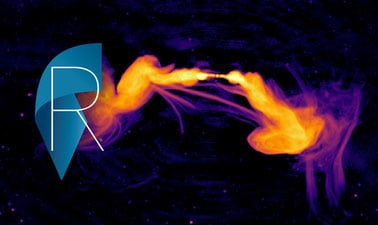- Level Expert
- Course by École polytechnique fédérale de Lausanne
- Total students 165 enrolled
-
Offered by

About
The first part of the course introduces the different types of telescope technologies available to astronomers, with a particular focus on single-dish radio telescopes and radio interferometers. Optical, UV, X-ray, Gamma, neutrino, and gravitational wave telescopes will also be briefly covered, as well as a foray into Search for Extraterrestrial Intelligence.
We, then, dive deep into the principles of observational radio astronomy, covering the observables (flux, luminosity, brightness temperature), and the instrumentation (the radiometer equation, sensitivity calculations). Next, we describe various radio telescope technologies, as well as time-domain radio astronomy (pulsars, transients, Fast Radio Bursts). Finally, we look at different radio astronomy observatories around the world and compare their capabilities.
The rest of the course is dedicated to radio interferometric imaging. We introduce the Fourier transform and the van Cittert-Zernike theorem, and discuss the principles of aperture synthesis imaging (visibilities, sampling, point spread functions, deconvolution). We drill down into the radio-interferometer measurement equation (RIME), and use that to derive the principles of interferometric calibration and self-calibration. We also look at practical data reduction techniques, covering data inspection, flagging, basic calibration, and imaging, as well as the practical details of writing observational proposals.
The course includes a discussion of the future Square Kilometre Array radio telescope, its challenges, and projected scientific capabilities.
What you will learn
- Types of telescopes across the electromagnetic spectrum
- Single-dish radio telescopes and radio interferometers
- Basics of neutrino and gravitational wave astronomy
- Basics of the Search for Extraterrestrial Intelligence
- Fundamental radio astronomy observables
- Principles of radio telescopes, radiometer equation
- Diversity of radio telescope technologies and observatories
- Observing pulsars, transients, and other time-domain radio astronomy
- Principles of aperture synthesis imaging; Fourier theory
- Visibility function, sampling, PSF, deconvolution
- The radio interferometer measurement equation (RIME)
- Calibration and self-calibration of radio interferometers
- Practical data reduction, calibration, and imaging
- Developing observational proposals for radio observatories
Skills you learn
Syllabus
- Week 1: Study of the telescope technology, focusing on optical and radio telescopes - first part.
- Week 2: Study of the telescope technology, focusing on optical and radio telescopes - second part.
- Week 3: Introduction to observational radio astronomy, analyzing the main units of measure and the radio telescope principles.
- Week 4: Presentation of the ground rules of imaging using an interferometric array. Study of the Fourier transform, the sampling, and the van Cittert Zernike theorem.
- Week 5: Examination of the cycle of radio interferometric data, from visibilities to images - first part.
- Week 6: Examination of the cycle of radio interferometric data, from visibilities to images - second part.
Auto Summary
Explore "The Radio Sky II: Observational Radio Astronomy," an expert-level course by edX focused on the principles and practices of radio astronomical observations using modern interferometers. Dive into topics like radio telescope technology, measurement equations, and radio interferometric calibration and imaging. Ideal for science and engineering enthusiasts, this course offers flexible subscription options, including Starter and Professional plans.

Vasileios ANGELOPOULOS

Frédéric COURBIN

Griffin FOSTER

Jean-Paul KNEIB

Sphesihle MAKHATHINI

Kim MCALPINE

Oleg SMIRNOV


